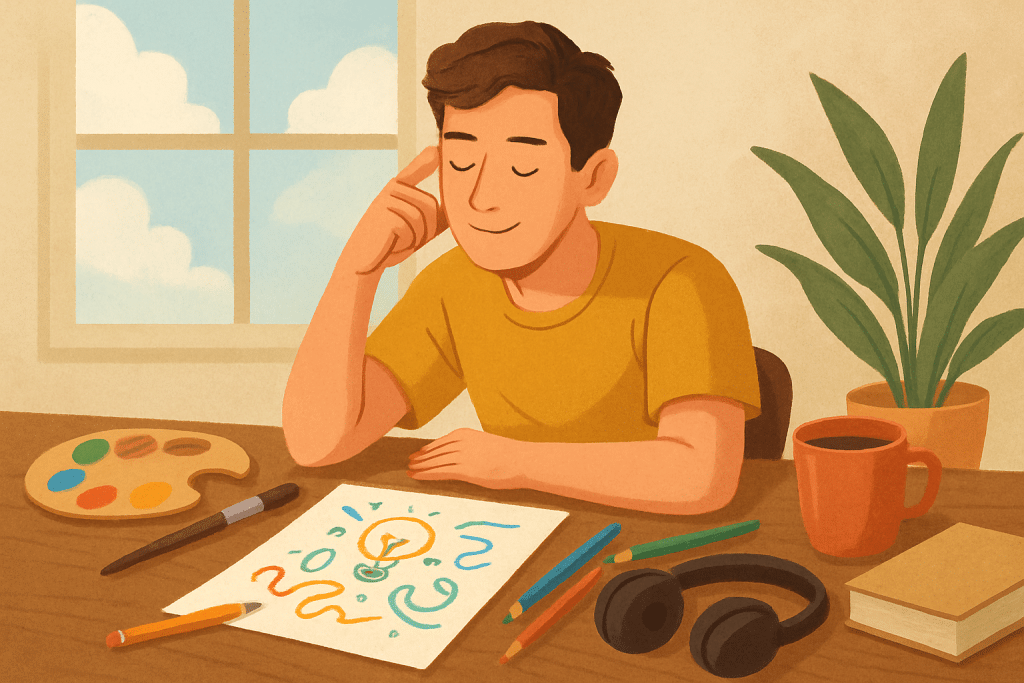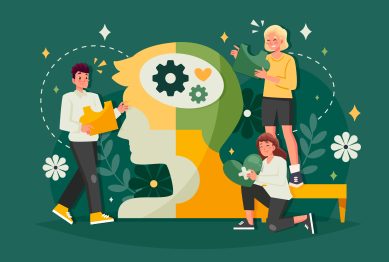In today’s fast-paced world, where we are constantly chasing deadlines and juggling tasks, the concept of “unstructured time” often feels like a luxury. However, research increasingly shows that unstructured time is not only crucial for fostering creativity, but also essential for well-being and innovation. In this article, we’ll dive into how unstructured time helps unlock creativity, enhances mental health, and drives innovation, all backed by research and real-world examples.

Why Unstructured Time Is Key to Creativity
The Science Behind Creativity and Free Time
Unstructured time allows individuals to think freely, daydream, and let their thoughts wander. Neuroscientific research supports the idea that periods of freedom and relaxation allow our brains to tap into creative potential. When not occupied with structured tasks, the brain enters what scientists call the “default mode network” (DMN). Research from the National Institutes of Health (NIH) in 2018 found that this network is activated during mind-wandering, which helps us generate creative thoughts and make connections between unrelated ideas.
This means that when we allow our minds to rest and wander, we open ourselves up to new ways of thinking. The brain can link ideas that it otherwise wouldn’t, leading to breakthroughs in problem-solving and innovation.
The Connection Between Free Time and Mental Health
In addition to fostering creativity, unstructured time is essential for maintaining mental health. Work-related stress has increased in recent years, leading to burnout and cognitive overload. The World Health Organization (WHO) highlighted in 2022 that overwork and lack of recovery time are key contributors to mental exhaustion.
Creating time for rest allows people to recharge and clear mental clutter. With fewer stressors, our cognitive functions improve, making us more productive and creative. The brain requires downtime to consolidate memories, process information, and restore energy, all of which enhance our ability to solve problems.
How Unstructured Time Fuels Innovation
Unstructured time doesn’t just help individuals; it also encourages innovation in organizations. Many successful companies now integrate free time into their work culture to boost creativity and innovation.
The Role of Unstructured Time in the Workplace
Companies like Google, 3M, and Atlassian have long recognized the value of unstructured time. For instance, Google’s “20% time” program allows employees to spend a fifth of their working hours on projects of their choice. This initiative led to the creation of some of Google’s most innovative products, such as Gmail and Google Maps. Similarly, 3M’s “15% time” resulted in the creation of Post-It Notes, one of the company’s most successful products.
These examples show that when employees are given the freedom to explore ideas without constraints, they’re more likely to generate innovative solutions. Giving people space to think creatively and experiment with new ideas leads to groundbreaking innovations.
Flexibility Drives Creativity and Problem-Solving
Research from Harvard Business Review (2021) found that employees with flexible schedules tend to be more creative. They experience lower stress and can approach problems from different perspectives, which boosts creativity. Structured schedules, on the other hand, can limit the ability to take risks and explore new possibilities. In flexible environments, people have more freedom to engage in activities that might spark new ideas and solutions, from informal brainstorming sessions to simply taking breaks and stepping away from work.
How to Incorporate Unstructured Time Into Your Routine
Adding unstructured time into your life doesn’t require drastic changes. It’s about being intentional with your time and ensuring you have moments throughout the day to let your mind rest and wander. Here are a few ways you can incorporate unstructured time into your routine:
1. Schedule Mind-Wandering Time
Instead of filling every minute of your day with tasks, intentionally schedule breaks where you can let your mind wander. You can do this by taking a walk, journaling, or simply sitting quietly for 10-15 minutes with no particular goal. The aim is to give your brain a chance to rest and make creative connections.
2. Create “No-Meetings” Days
In professional settings, implementing no-meetings days can give employees uninterrupted time to think creatively. These designated days allow individuals to focus on high-priority tasks, engage in brainstorming, or tackle complex problems without the pressure of back-to-back meetings.
3. Practice Mindfulness
Mindfulness practices, such as meditation or deep breathing exercises, create mental space that fosters creativity. These practices help reduce stress, improve focus, and reset the brain. Taking just 10 minutes to meditate or practice mindful breathing can help clear your mind and improve your ability to think creatively.
4. Prioritize Breaks
Taking short, regular breaks throughout the day has been shown to improve focus and productivity. Instead of pushing through long hours of work, take a 5-minute break every hour to stretch, walk around, or do something unrelated to work. These breaks recharge your mental batteries, enhancing your ability to solve problems and generate new ideas.
5. Engage in Non-Work Activities
Sometimes, the best ideas come when you step away from work entirely. Engaging in hobbies like painting, cooking, or hiking can provide a mental reset, allowing you to return to work with fresh ideas. These activities also offer an opportunity to engage in creativity without the pressure of producing something “useful” or “important.”
The Future of Unstructured Time
As work cultures evolve and flexible work arrangements become more common, the concept of unstructured time is likely to become more integrated into everyday routines. Remote work and hybrid schedules offer more opportunities for employees to manage their own time and create space for mental rest and creativity. In the future, businesses may increasingly recognize the value of unstructured time, not just for creativity but also for employee well-being.
A 2023 Gallup study found that 60% of employees prefer flexible work schedules. With more workers demanding autonomy over their time, we’re likely to see more companies embrace the idea of free time as a key driver of innovation and creativity.
Conclusion
Unstructured time is more than just a luxury—it is a critical component of creativity, mental health, and productivity. By embracing unstructured time, we give our brains the opportunity to relax, reset, and connect ideas in new ways. Whether you’re an entrepreneur, artist, or employee, incorporating unstructured time into your routine can help you unlock your creative potential, solve complex problems, and contribute to innovative solutions.
As we move toward more flexible and remote work environments, the value of unstructured time will continue to grow. Embrace it, and watch your creativity and productivity soar.
Reference
- Unstructured Time Unlocks Creativity- https://blog.inkhouse.com/
- Unstructured Time Drives Organizational Innovation- https://ideawake.com/
- Brain Research on Creativity- https://www.eurekalert.org/









